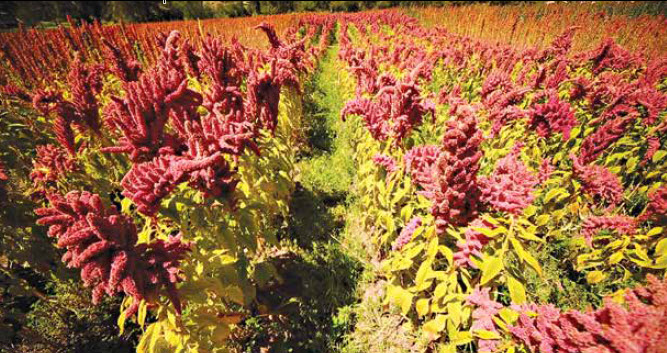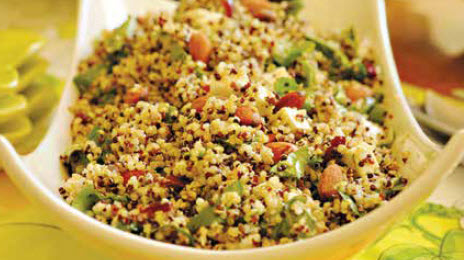What’s The Big Deal About Quinoa?
 By: Nick Thomas
By: Nick Thomas
This strange food almost everyone has heard of, but many seem to pronounce differently, is packed with quite a nutritional punch. It can be extremely beneficial in your diet; it might even be worthy enough to be deemed a “superfood.”
Quinoa is botanically considered a seed rather than a grain. It is a broadleaf plant that produces seeds rather than fruit. Unlike actual grains, such as wheat and barley which grow in grasses, quinoa plants grow edible seeds. Because of this process, it is officially labeled as a “pseudocereal,” a seed used in nutrition the same way a cereal grain such as barley would be.
Quinoa holds some pretty awesome anti-inflammatory and disease fighting properties, among many other things, as well. It is a rich source of complete protein, especially for a grain. The secret is lysine, which is a rare amino acid not found in many other gains.

This “super grain” reduces your chances of developing type 2 diabetes, but it can also help you keep your glucose levels balanced if you already have diabetes. The reason this works is because quinoa is rich in complex carbohydrates, or healthy carbohydrates, that slowly digest and keep you satiated for longer while maintaining your blood sugar and appetite level.
Also found in this super grain is magnesium, which is a vital mineral required for optimal metabolic, cardiovascular, and blood vessel functions.
Do you suffer from migraine headaches? Quinoa may be a great choice for you to work into your weekly meals because it is high in riboflavin, or vitamin B2. This promotes blood vessel expansion in the brain and reduces the chances of migraines.
Maybe you have Celiac disease or a gluten intolerance — quinoa will be your new best friend. It is technically a seed, however, because it is unrelated to wheat, it makes the perfect substitute for pasta, wheat flour, oatmeal, and so much more. You can grind, boil, bake, steam, and even fry quinoa.

There are three verities of quinoa: white, red and black. White quinoa is the most widely sold and takes the least amount of time to cook. Red quinoa is used mostly in salads or other recipes where a grain-like texture is desired because it does not easily lose it shape during cooking. Black quinoa actually has a bit of a different taste than the other two types. It has more of an earthy, sweet flavor and takes the longest to cook.
Now, let’s get to the practical side of this new superfood you now want to add to your weekly menu. You can find quinoa in the grain isle at almost any grocery store these days. When you get home ready to cook your quinoa, it’s really pretty simple. Just follow the directions on the package, and don’t forget to add a little sea salt to your water when you boil it to add some flavor. You can also cook it in some bone broth for added flavor depth. Use quinoa instead of rice or other grains as a side dish to any meal, or even mix it in with your salad for added texture, taste, and nutritional punch.
For more information regarding a personalized general or sports nutrition plan contact me at Prime Performance 423-805-0870.
By: Nick Thomas
Owner of Prime Performance Training, and Certified Sports Nutritionist
